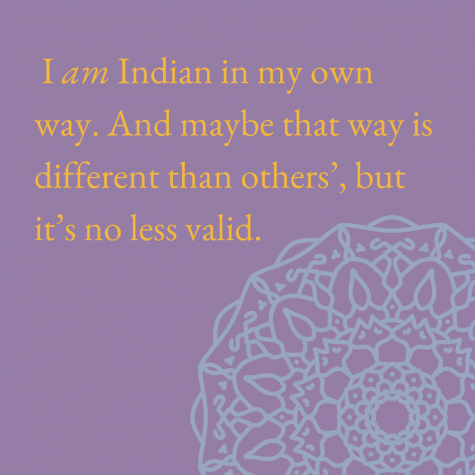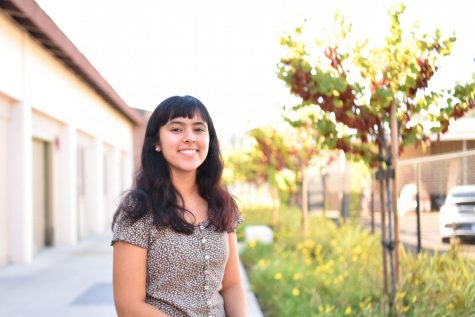Bloom: Am I Indian enough?
Processing my feelings about being Indian American
December 11, 2021
hen I was in daycare, my teachers were scared I would never speak English.
Whenever I’d say doodh, the Hindi word for milk, they would laugh, thinking I was saying “doo-doo” instead. But my mom never worried, assured that once I started talking, I wouldn’t stop.
She was right. But when I did pick up English, my brain refused to hold more than one language at a time. So while one chubby toddler hand clutched English in its fist, my other hand’s fingers unfurled and let Hindi fall.
Over the next few years, my parents tried everything from talking to me solely in Hindi at home to putting me in Hindi classes, but no matter what they did, speaking Hindi stayed stubbornly out of my grasp.
Maybe it isn’t that big of a deal — after all, I can still understand the language when people talk to me. But as much as I hate to admit it, ever since I lost what measly grip I had on my culture, it’s been a downward slope.
Because after the language classes ended, I was never forced to interact with Indian culture again. So I just … didn’t. I didn’t watch Bollywood movies — other than “Jab We Met” over and over — or listen to Indian music. I didn’t pick up any books on Hindu mythology, and I had no interest in traditional Indian styles. And as Indian culture started to fade from my life, so did my feelings of my Indian identity. I know I don’t “look Indian” — many people have told me they assumed I was white or biracial. When I’m out in public in Indian grocery stores and temples, I elicit curious glances, and strangers in parking lots randomly speak to me in Spanish more than they do in Hindi. But I don’t blame them for not recognizing me as who I am. When I look at myself in the mirror, I don’t see an Indian girl. So why would anyone else?
Because I know what being Indian is — it’s complaining about bharatanatyam teachers and bringing roti in metal tins to school. And I know because we’re everywhere.
Indians aren’t a minority in Cupertino like they are in other parts of the world, yet instead of feeling safe and secure, I can’t help but feel ashamed of not being Indian enough for my environment. So when I came across a TikTok on someone’s Instagram story last month where a group of girls were all dressed up for a Navratri party in sequined lehengas and colorful dupattas, shame and resentment bubbled up without warning. Wow, I thought as I watched them through the screen. I’m a bad Indian.

I told myself that maybe if I cared more about Bollywood movies or tried harder to speak Hindi, I wouldn’t feel this way now. But truthfully, it was a lot more than that. Throughout my life, these emotions had been culminating into white-hot embarrassment and guilt. It was a self-perpetuating cycle: I didn’t feel “Indian enough,” so I avoided my culture to save myself from discomfort, which made me feel even less Indian than before, leadingwhich led me to feel like I didn’t have a right to claim Indian culture as mine.
But the other day, something switched. Just as I walked into the living room where a Bollywood movie was playing, a song began — only, it wasn’t a song. It was a Sanskrit mantra that the main character was repeating as he prayed, and I caught myself mouthing the words.
Suddenly, I was transported back to quiet mornings before elementary school, when I used to sit with my mom and say the mantras with her, not knowing what they meant but enjoying the cadence of the words on my tongue. And all at once, things I’d forgotten came back: memories of watching the Ramayana mythology over and over on my mom’s DVD player, discovering queer Indian social media influencers, and feeling that rush of fulfillment at finally seeing real representation of myself and texting long rants to my non-Indian friends about why “Jab We Met” is the best Bollywood movie of all time.
They’re little things, and yet each one holds immeasurable weight. They all reminded me that I am Indian in my own way. And maybe that way is different than others’ but it’s no less valid. All this time, by constantly telling myself that I’m not enough, I’ve been the one who’s really invalidating my identity. It may take a while longer to fully feel secure in who I am, but this is the start. I am Indian. And from now on, I’m not going to let anyone — including myself — tell me otherwise.

















